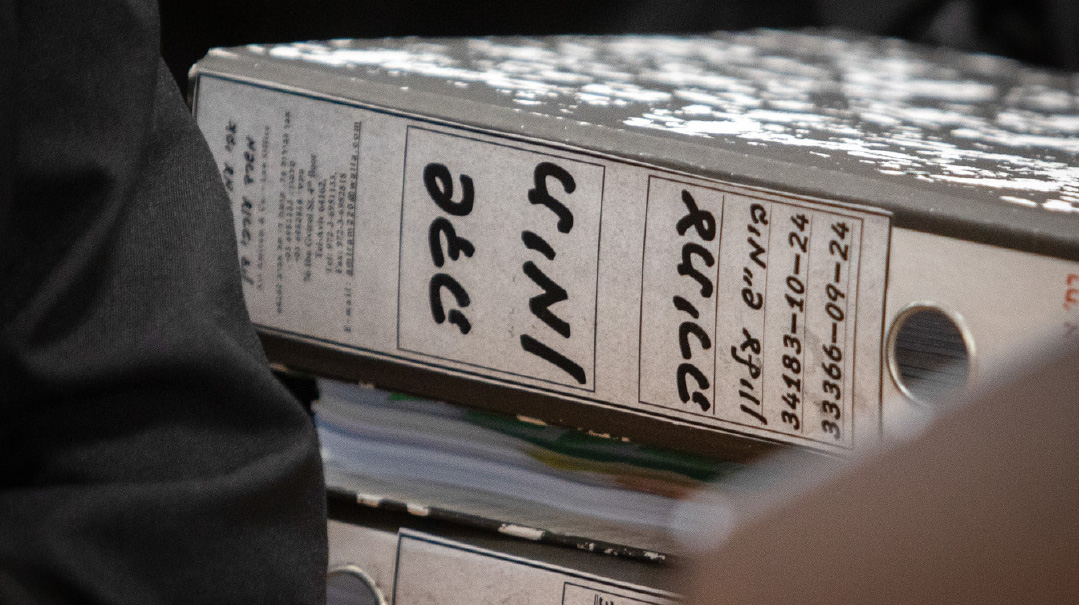Who’s the Real Hate Group?

Schadenfreude, they say, is a dish best served cold. If so, those slandered by the Southern Poverty Law Center (SPLC) as “hate groups,” “white supremacists,” and “anti-Muslim extremists” in recent decades, must be delighted by the SPLC’s recent overnight implosion.
The SPLC’s listings of “hate organizations” — its major activity in recent years — are guided by its progressive, identity politics. In 2015, for instance, the SPLC labeled Ben Carson, secretary of Housing and Urban Development, an “extremist” — an evaluation for which the SPLC eventually apologized. Last June, the SPLC settled for $3.4 million in a lawsuit brought by Maajid Nawaz and his Quilliam organization, and apologized for having included them in its “Field Guide to Anti-Muslim Extremists.” In fact, Nawaz, a former Islamist, and Quilliam combat Islamist extremism and promote a moderate Islam.
Professor Carol Swain, a black woman who grew up in a shack with no running water, with ten siblings sharing two beds, and without a pair of shoes to wear, was called an “apologist for white supremacists” by the SPLC. Her crime? She positively reviewed a documentary entitled “A Conversation about Race,” which included interviews with poor whites who express anger at being constantly accused of racism and lambasted for their supposed “white privilege.” Swain had previously aroused the SPLC’s ire by describing it as an organization supposedly monitoring hate groups that has become one itself.
Another hate group, according to the SPLC, is the Alliance Defending Freedom (ADF), a Christian legal advocacy organization, which has won nine cases in the Supreme Court, including one 9–0 and another, Masterpiece Cakeshop, 7–2. All that is required to be put on the SPLC’s hate list is to have opposed the Supreme Court’s decision in Obergefell v. Hodges, which imposed same-gender marriage on the entire country, or to have defended the rights of traditional religious believers not to affirm by their actions what their religion tells them is a sin.
Another name listed on the SPLC hate list is Princeton professor Robert George, one of the authors of What Is Marriage? Man and Woman: A Defense. Somali-born Ayaan Hirsi Ali, a campaigner against Islamism and such common Muslim practices as child brides and female mutilation, also made the SPLC’s list.
Any group advocating for limitations on immigration or changes in the current system of allocation of immigrant slots, such as the Center for Immigration Studies, which has served as a government contractor for the Department of Justice and the Census Bureau and testified over 100 times before Congress, is almost guaranteed to find itself on the hate list.
FAR FROM BEING DISCREDITED by the wild nature of its charges, the SPLC’s listings are widely cited by media outlets, student radicals, and even corporate America as authoritative. Amy Coney Barrett of the Seventh Circuit Court of Appeals was castigated by former senator Al Franken in her confirmation hearings, for having once spoken for the Alliance Defending Freedom, labeled a “hate group” by the SPLC. And the Yale law students, who wrote to Dean Heather Gerken to oppose the appearance on campus of a lawyer for ADF on the grounds that she works for a “hate group,” relied, in part, on the SPLC’s listing.
Professor Carol Swain found that speaking engagements and job offers from other universities dried up after she was labeled an accomplice of white supremacists by the SPLC. The students who physically menaced American Enterprise Institute scholar Charles Murray and prevented him from speaking at Middlebury College and sent Professor Allison Stanger, who was moderating his talk, to the hospital with severe whiplash injuries were emboldened by the SPLC’s description of him as a white supremacist.
Visa and Mastercard blocked donations to David Horowitz’s Freedom Center after it was listed as a hate group by the SPLC. And some of the most powerful corporations on the planet — Facebook, Google, PayPal, and Twitter — have hired the SPLC to patrol their platforms for “hate speech.”
THE BLOWUP OF THE SPLC began on March 14, with the announcement that the SPLC was severing all connection with Morris Dees, who cofounded the organization in 1971 and who for nearly half a century has served as its primary public face. The cryptic accompanying statement gave little hint of the specific reasons for Dees dismissal: “As a civil rights organization, the SPLC is committed to ensuring that the conduct of our staff reflects the mission of the organization and the values we hope to instill in the world.” Within days of Dees’s firing, SPLC’s president, Richard Cohen, and chief of the legal staff, Rhonda Brownstein, also resigned.
Soon news stories began to appear about the practices that led to Dees’ firing. In delicious irony, the SPLC was accused of precisely the types of offenses with which it had been so quick to charge others, particularly racism and sexism. Multiple accusations against Dees for acting inappropriately toward women staffers appeared.
But perhaps even more damaging to the Center because it was more endemic to the entire organization was the charge of racism. Though the SPLC employs close to 100 blacks, they are almost exclusively in low-level administrative and support positions — the “help,” in the words of one black employee. The SPLC’s highest-ranking black attorney, who castigated the organization for not living up to its own professed values, resigned just a few days before Dees’s firing.
But most damaging of all is the revelation, in the words of progressive journalist John Egerton, that Dees was a “super salesman and master fund-raiser” for whom civil rights work served to “bilk gullible Northern liberals.” Bob Moser, who worked for the SPLC from 2001 to 2004, published a devastating portrait of the Center, “The Reckoning of Morris Dees and the Southern Poverty Law Center,” in the New Yorker. Working in the SPLC’s gleaming six-floor headquarters in Montgomery, Alabama, in Moser’s words, turned “idealists into cynics.” Soon after arriving in 2001, Moser began asking “Where are the lawyers? Where’s the diversity?” A veteran employee laughingly responded, “And you call yourself a journalist? Clearly you did not do your research.” Passing a memorial to slain civil rights workers emblazoned with Martin Luther King’s words, “Until justice rolls down like waters,” Moser and his coworkers would intone, in their deepest voices, “Until justice rolls down like dollars.”
As scams go, constantly proclaiming the rising tide of hatred proved to be a highly profitable one. The SPLC’s endowment is close to half a billion dollars, including $92 million parked in offshore tax havens. In the year after Donald Trump’s surprise victory, the SPLC raised $132 million. And as always, it spent only a small fraction of that on actual work and a great deal on further fund-raising. For years, Charity Watch has given the SPLC an “F” for the small percentage of its revenues directed toward the work for which donations are being given.
It has been a long time since the SPLC did much actual poverty law. Its Montgomery, Alabama, main office, and four satellite offices, have been primary counsel in only 12 cases since 2016, according to the Washington Examiner’s Charlotte Allen.
Millard Fuller, Dees’s law school friend and first business partner, in a mail order business they sold for over $6 million dollars, admits that “Morris and I, from the first day of our partnership, always shared the overriding purpose of making piles of money… and were not particular about how we did it.”
But in his early days, Dees, and later the SPLC, did do some important work, earning his iconic status. In 1969, he successfully sued to integrate the Montgomery YMCA. And the SPLC ensured that blacks would be represented in the Alabama legislature, by forcing the creation of single-member districts. Later, the SPLC would effectively bankrupt the KKK by winning multimillion dollar suits against it for the violent acts of its members, though by then the Klan was largely a spent force.
The line between idealistic actions and an ongoing progressive scam designed to net “piles of money” turns out to be a thin one. The thinness of that line between good and evil is one lesson that we can all take to heart and be forewarned.
Originally featured in Mishpacha, Issue 758. Yonoson Rosenblum may be contacted directly at rosenblum@mishpacha.com
Oops! We could not locate your form.







